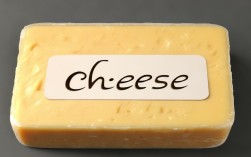Card throwing is more than just a fun pastime—it’s an art form with its own unique terminology. Whether you’re a beginner or an experienced enthusiast, understanding the English vocabulary related to this skill can deepen your appreciation and improve your technique. Below, we break down essential terms, techniques, and concepts to help you navigate the world of card throwing like a pro.

Basic Card Throwing Terms
Deck: A standard set of 52 playing cards, often used for throwing. The quality and condition of the deck can significantly impact performance.
Grip: How you hold the card before throwing. Common grips include the mechanical grip (pinching the card between thumb and middle finger) and the flat grip (holding the card flat against the palm).
Release: The moment the card leaves your hand. A smooth, controlled release is key for accuracy.
Trajectory: The path the card follows in the air. Factors like angle, speed, and spin influence trajectory.
Spin: The rotation of the card during flight. Proper spin stabilizes the card, increasing distance and precision.
Advanced Techniques and Their Names
Frisbee Throw: A horizontal throw where the card spins like a frisbee, ideal for long-distance accuracy.
Flick Throw: A quick, wrist-driven motion that generates high speed but requires precise control.

Overhand Throw: A vertical throw where the card is released from above the shoulder, useful for targeting elevated objects.
Boomerang Effect: A technique where the card curves mid-air, returning partially to the thrower. This requires advanced spin control.
Physics of Card Throwing
Understanding the science behind card throwing can refine your skills:
Aerodynamics: The study of how air interacts with the card. A well-thrown card minimizes air resistance while maximizing lift.
Gyroscopic Stability: Spin creates a gyroscopic effect, keeping the card steady in flight.
Drag Force: Air resistance that slows the card down. Reducing drag (by throwing with a clean edge) improves distance.
Common Mistakes and How to Fix Them
Wobbly Flight: Caused by uneven spin. Adjust your grip and release for smoother rotation.

Short Distance: Often due to weak wrist motion. Practice flicking harder while maintaining control.
Inaccuracy: Usually stems from poor alignment. Focus on keeping your arm straight and following through with your throw.
Famous Card Throwers and Their Contributions
Ricky Jay: A legendary performer who popularized card throwing as a performance art, demonstrating incredible precision and power.
Anthony Brooks: Known for breaking distance records, his techniques are studied by enthusiasts worldwide.
Zach Mueller: A modern cardistry expert who combines throwing with intricate flourishes, pushing the boundaries of the craft.
Training Drills to Improve Your Skills
Target Practice: Start with close-range targets (like a hat) and gradually increase distance as accuracy improves.
Spin Control: Practice throwing cards with varying spin speeds to understand how rotation affects flight.

Consistency Drills: Throw 10 cards in a row, aiming for the same spot each time. Track progress to identify weaknesses.
Safety Considerations
While card throwing is generally safe, improper technique can lead to injuries:
- Always ensure a clear path before throwing.
- Avoid aiming at people or animals.
- Use standard playing cards—specialized throwing cards can be too sharp for beginners.
The Cultural Impact of Card Throwing
From magic shows to action movies, card throwing has captivated audiences for decades. Films like X-Men (Gambit’s charged cards) and Now You See Me showcase its dramatic potential. Meanwhile, competitive throwing events continue to grow, blending sport and artistry.
Choosing the Right Cards for Throwing
Not all decks are equal. Consider:
- Card Stock: Thicker cards (like Bee or Bicycle Premium) withstand repeated throws.
- Coating: A plastic-coated deck lasts longer than paper-based ones.
- Corners: Rounded corners reduce wear and tear.
Joining the Card Throwing Community
Online forums, YouTube tutorials, and local clubs offer valuable resources. Engaging with fellow throwers can provide tips, motivation, and even opportunities for competitions.
Card throwing is a skill that combines precision, physics, and creativity. By mastering the vocabulary and techniques, you’ll not only improve your throws but also gain a deeper connection to this unique discipline. Whether for performance, competition, or personal enjoyment, the journey of perfecting your throw is as rewarding as the skill itself.



